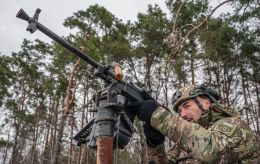F-16s for Ukraine: How American fighter jets can change battlefield situation
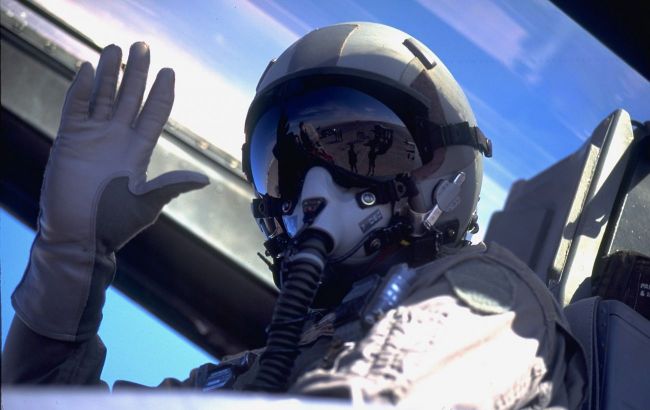 An F-16 pilot (photo: Getty Images)
An F-16 pilot (photo: Getty Images)
Ukraine may finally receive American F-16 fighters soon. What other planes the Ukrainian Air Force can get, how F-16s will affect the battlefield, and whether they will be able to protect the frontline regions from Russian bombs read in the RBC-Ukraine article.
Contents
- How Ukraine got F-16
- Swedish Gripen and French Mirage-2000
- How F-16s will help Ukraine on battlefield
Ukraine started talking about F-16s as soon as the full-scale Russian invasion began. As soon as it became clear that the Ukrainian Armed Forces could not repel Russian air attacks with their existing forces, Ukrainian diplomats and politicians began to talk at various levels about powerful air defense systems, of which the F-16 is a part.
For a long time, the topic of supplying Ukraine with American fighters was virtually taboo - Kyiv's allies did not dare to make any promises in this regard. But the further Russia went in its quest to seize Ukrainian territories, the more cooperative Ukraine's partners became. As a result, Europe and America concluded that they would have to provide Ukraine with a certain number of F-16s.
How Ukraine got F-16s
Over the two and a half years of full-scale Russia's war, Ukraine has repeatedly received Western weapons that have de facto become game changers on the battlefield. At first, Kyiv was reluctant to receive any of these weapons, arguing that the supply of powerful NATO-standard military equipment would push Russia to escalate.
Soon it became increasingly clear that the Kremlin would escalate the conflict anyway, no matter what weapons Ukraine received. On the contrary, Ukrainian troops need powerful weapons to repel Russian attacks at least effectively. Russia has aggressively reacted to literally every piece of weaponry that has been transferred or intended to be transferred to Ukraine. Each package of military equipment being prepared was accompanied by a surge of threats from Russia - from the use of nuclear weapons to cryptic phrases like "we have not yet begun in earnest." When the weapons were in the hands of the Ukrainian Armed Forces, it became increasingly clear that there was nothing behind Moscow's threats.
First, Ukraine was given powerful cannon artillery, with which the Ukrainian military could stop and repel Russian troops. Later, the Ukrainian Armed Forces received HIMARS MLRS, which allowed them to clear the territory of equipment, warehouses, and concentrations of Russian manpower with precise strikes, and subsequently de-occupy some of the seized lands. Then there were German tanks, new air defense systems, high-precision missiles of various ranges, and finally, permission to fire on military targets in Russia itself.
The F-16s are fourth-generation American fighters that were supposed to be a powerful support for the air defense system and cover for ground troops. Requests to transfer the aircraft to Ukraine were made in almost every conversation about new arms packages. In January 2023, US President Joe Biden once again said "no" when asked if America would give its fighter jets to Ukraine.
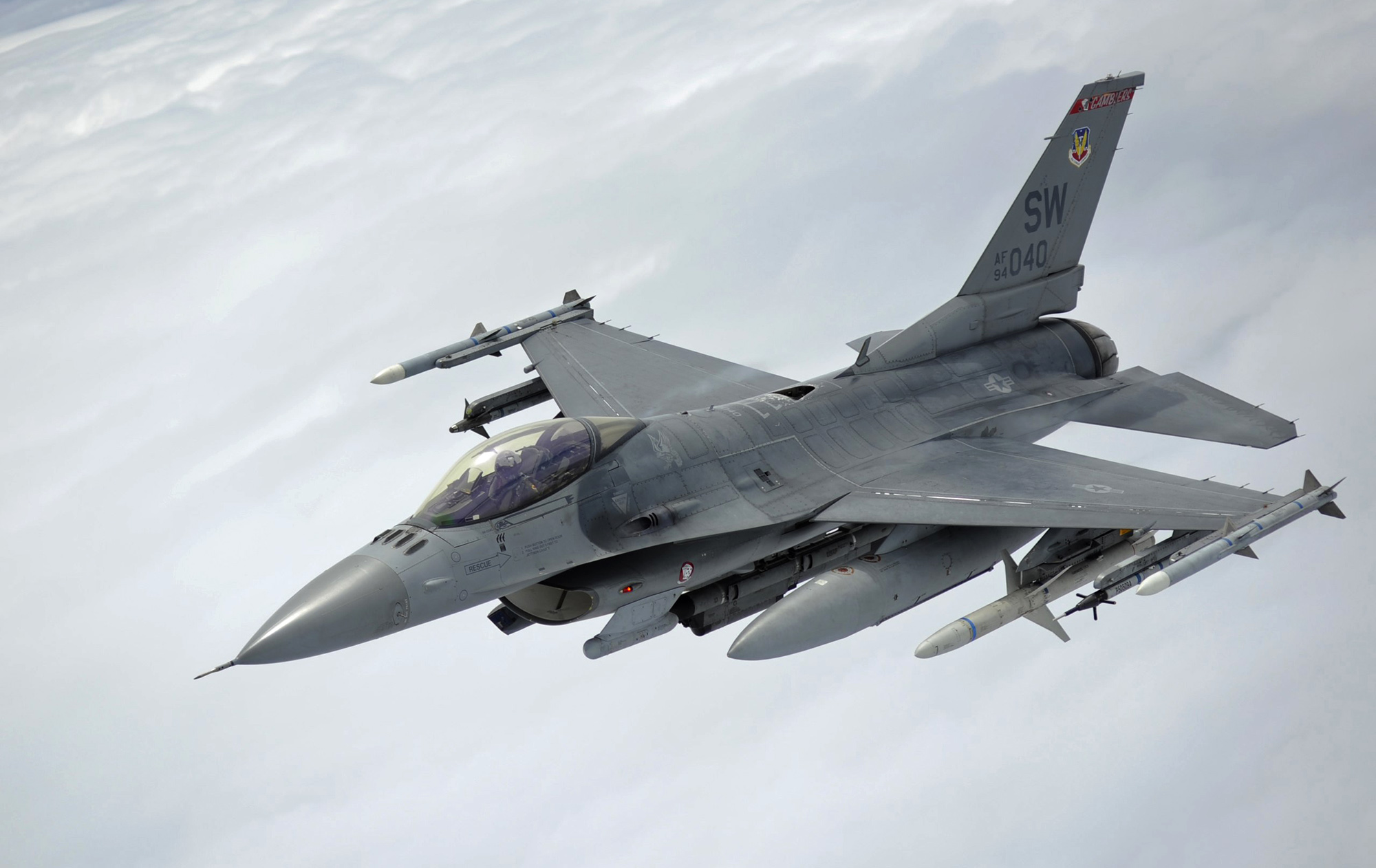 F-16 during a maneuver (Photo: Getty Images)
F-16 during a maneuver (Photo: Getty Images)
F-16s are available in many other countries besides the United States, but for Norway to transfer American fighters to Ukraine, Washington's permission is required. And while in early 2023 the White House was more than categorical on this issue, Biden had given the green light for training Ukrainian pilots six months later.
When the United States was still not publicly admitting the possible transfer of F-16s to Ukraine, the United Kingdom, and the Netherlands volunteered to help with this issue. In May 2023, the Prime ministers of both countries, Rishi Sunak and Mark Rutte, announced the creation of an aviation coalition that would purchase fighter jets for Ukraine. Apparently, by that time, America had already authorized the supply of its aircraft to Ukraine. Sunak and Rutte's alliance was a powerful impetus and a kind of starting point for moving from words to deeds. While the coalition was looking for fighters, Ukrainian pilots had already traveled to Denmark, the UK, and later to the US for training.
Initially, it was about three squadrons of F-16s for Ukraine, which is more than 30 aircraft. Today, it is known that the first batch will consist of 6 aircraft - at least according to Western media. It has also been reported that 12 pilots have already undergone training.
The F-16 is not a new fighter jet. It was developed in parallel with the MiG-29, which is used by both the Ukrainian and Russian air forces. Today, the countries that are supplying Ukraine with fourth-generation American fighters are actively rearming themselves and purchasing F-35s, which are already on the waiting list, says aviation expert Kostiantyn Kryvolap.
"The delay in the delivery of the aircraft (F-16 for Ukraine - ed.) was because F-35s were delayed in delivery. F-35s produce 150 aircraft per year. The queue for F-35s is in the 2030s," Kryvolap says in a comment to RBC-Ukraine.
Swedish Gripen and French Mirage-2000
When the supply of American fighters was still in question, Ukraine was actively looking for alternatives. Among them were the Swedish Gripen and the French Mirage-2000. The JAS 39 Gripen is a multi-role fighter, which was adopted by the Swedish Air Force in 1997 and has not yet been exported.
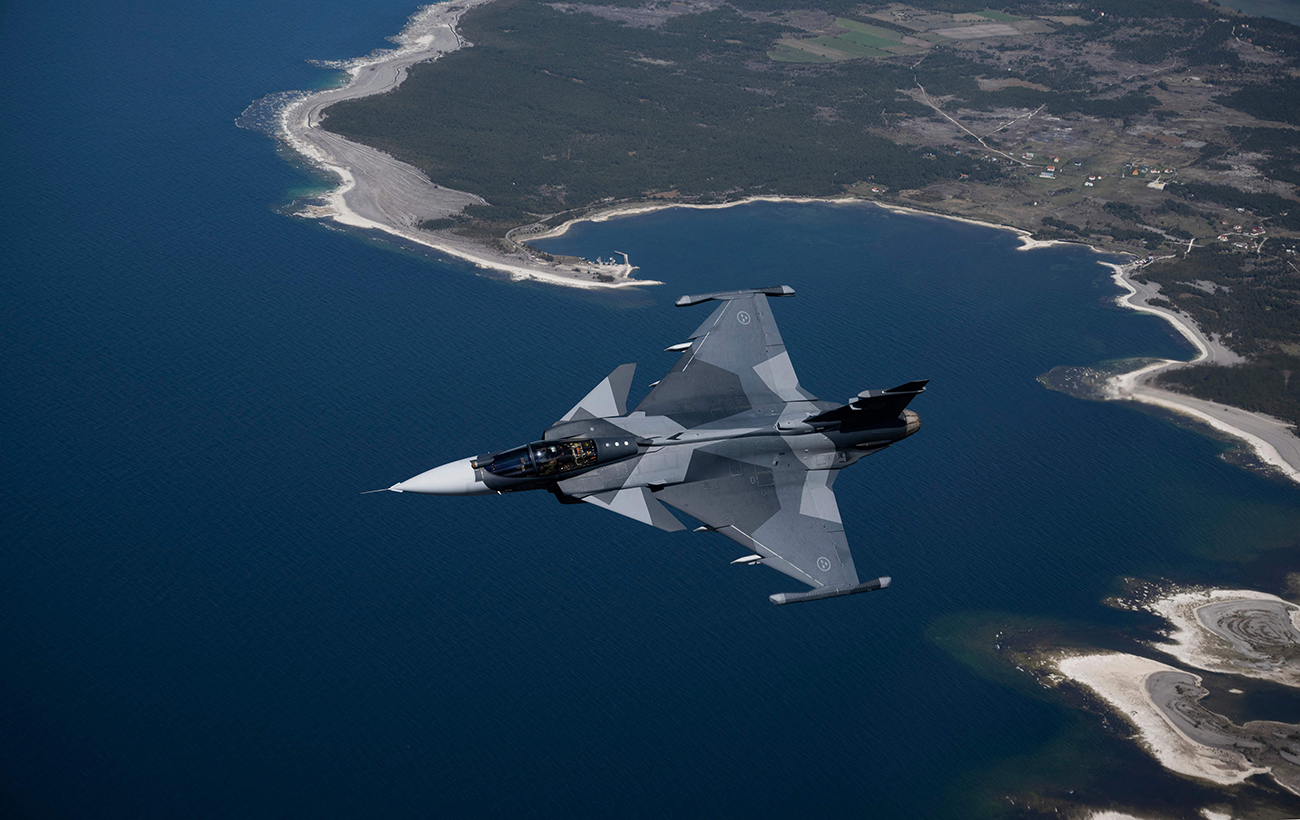 A Swedish Gripen fighter jet (Photo: Getty Images)
A Swedish Gripen fighter jet (Photo: Getty Images)
At the end of May 2023, when Western allies announced the coalition, Sweden announced that Ukrainian pilots could train on the Gripen. Later, the issue of supplying the aircraft was discussed more specifically. At the same time, RBC-Ukraine's sources noted that Gripen would be a promising option, especially in the face of the actual stalling of F-16 deliveries. However, the stronger the F-16 coalition became, the weaker Sweden's intentions to provide the Ukrainian Air Force with its fighters became. In the end, Swedish Defense Minister Paul Johnson announced that he was suspending the Gripen transfer process to allow the F-16 to be put into service.
"Other coalition countries have been asking us to wait with the Gripen system," he said, referring to the countries that plan to provide Ukraine with F-16s.
France did not change its plans and in June 2024 confirmed its intention to provide Ukraine with Mirage-2000-5 fighters. Paris had been planning to give Kyiv its planes before, but in 2023 it was Rafale fighters. As early as February 2024, Ukrainian President Volodymyr Zelenskyy announced that France would provide Mirage.
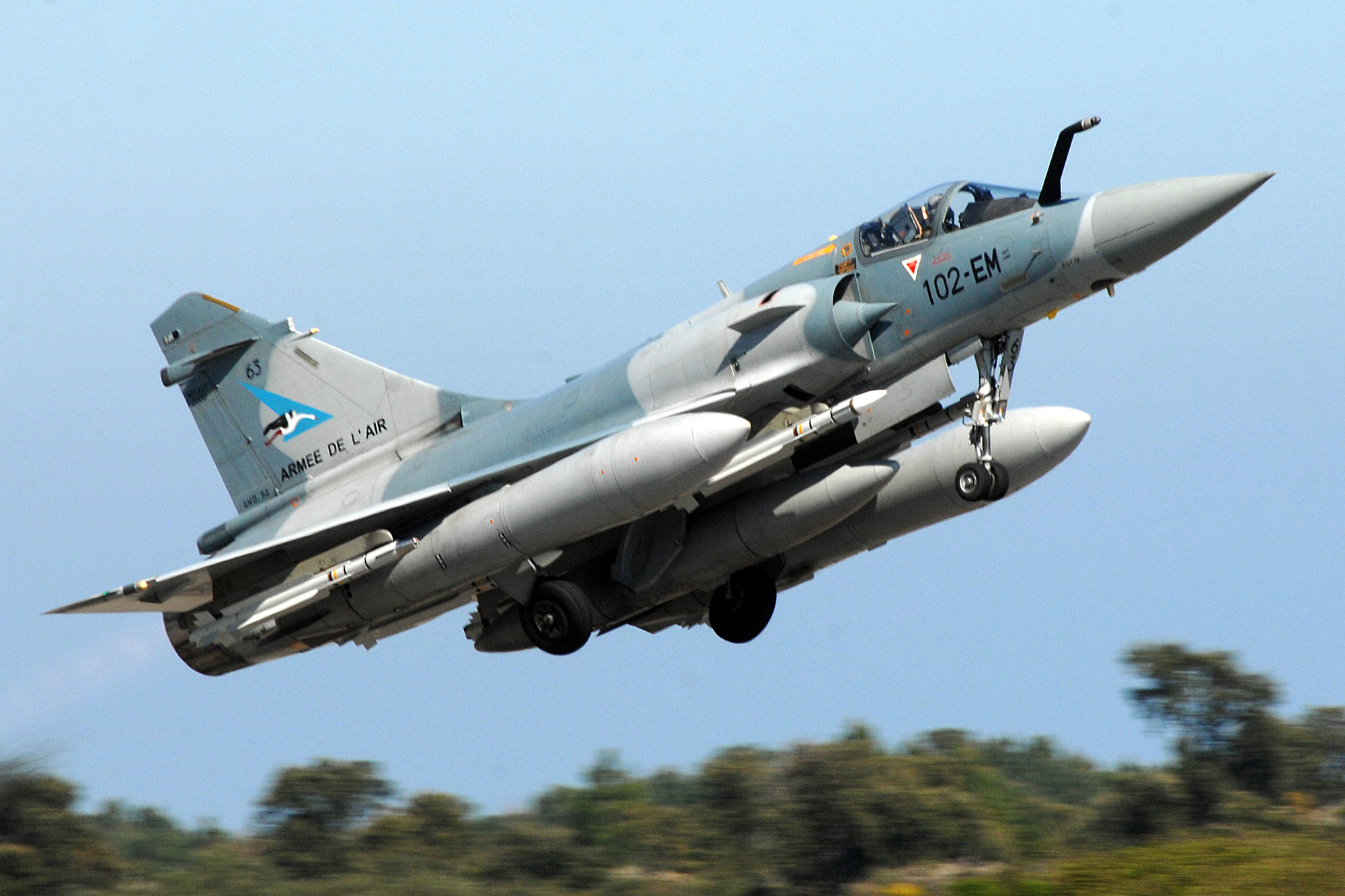
French Mirage-2000-5 (Photo: Getty Images)
The Mirage-2000-5 is a modernization of a 1980s fighter jet used for air combat. Although it would be better for the Ukrainian Air Force to get other Mirage modifications that can hit ground targets, there is no choice in the face of a shortage of aircraft.
How F-16s will help Ukraine on battlefield
Although the development of the F-16 began in 1970, the same year as the MiG-29, today's American aircraft cannot be compared to their Soviet counterpart. Over the years of modernization, the F-16 has evolved from a fighter jet into a multifunctional machine, says military expert Pavlo Narozhnyy.
"From the very beginning, they were designed as fighters. The task was to shoot down other aircraft, to shoot down other air targets. For example, cruise missiles, in the 70s, of course, drones were out of the question. And then the F-16 received other means of destruction. And now it seems to have more than 250 different weapons in its arsenal that it can operate with," Narozhnyy says in a commentary to RBC-Ukraine.
Kryvolap, in turn, emphasizes that the F-16 is a kind of aviation platform that can be used to attach almost anything. "If it has a good missile, even if it has a bad radar, it will be able to receive information about the enemy and hit it with a missile with the help of a long-range radar detection aircraft," Kryvolap adds. Given the fact that Sweden will provide Ukraine with Saab 340AEW long-range radar detection aircraft, the F-16 will be able to work in tandem with them.
Since the F-16 can work with a large number of weapons, the range of its targets is quite wide. For example, the HARM missile, which works against radar stations, did not take root well on the avionics of Ukrainian aircraft, but it will work perfectly if launched from an F-16. And when the enemy's radar station is destroyed, its air defense is virtually impossible.
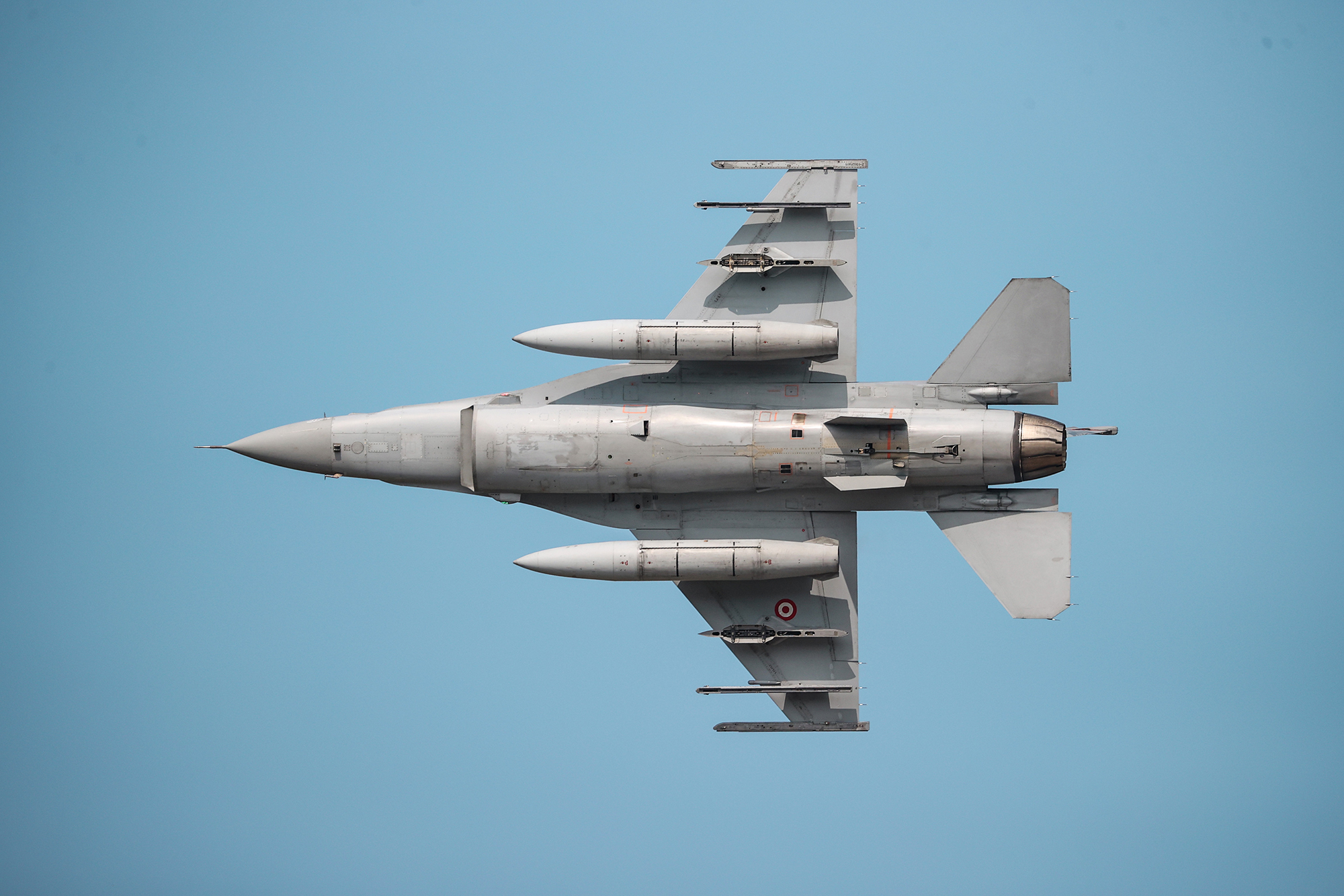 F-16 (Photo: Getty Images)
F-16 (Photo: Getty Images)
Also, American fighter jets can significantly affect the ability of Russians to drop guided aerial bombs, a precision weapon that can cause significant damage due to its heavy warhead.
Firstly, the very fact that a pair of F-16s are patrolling the skies could potentially scare away the bomb carriers, the Su-34 and Su-35. Both planes can perform an anti-missile maneuver, but at this speed and load, the same suspended bombs can simply break away with all the attachment points. This is not a new situation for Russian aircraft - guided aerial bombs regularly crash-land on Belgorod and the surrounding area.
Second, the F-16 is a maneuverable air defense system. If the Kharkiv region is potentially covered by the Patriot air defense system, and Russian bombers are flying to Sumy, the complex cannot be moved in a few minutes. And the F-16 will do an excellent job of that.
In addition, the American fighter jet can become an effective attack aircraft on the battlefield to support ground troops. If it is loaded with a JDAM-ER missile with a range of 150 km, it can easily hit the required targets.
"The plane flies up to 30 km from the line, drops this bomb, the jet engine turns on, the plane flies, and the bomb falls on the enemy command post. This is what is currently done with Himars missiles or drones, but Himars missiles carry 30 kg of explosives, and an air bomb carries 250 kg," Narozhnyy says.
In other words, the F-16 will be a great support for infantry and a cover for the skies. However, it is still too early to say - if the Ukrainian Air Force receives only six fighters by the fall, it will not affect the situation as much as it could. In May 2024, Volodymyr Zelenskyy said that Russia had about 300 aircraft that it is actively using, so Ukraine needs at least 120-130 units to confront the Russians in the sky.
In addition, we need to take into account the fact that the Russians will immediately start hunting for F-16s. The constant attacks on the airfield in Starokostiantyniv are designed to prevent it from being equipped for new fighters. The Russian military-industrial complex is constantly developing, albeit at a slow pace, by smuggling the necessary microelectronics. As soon as the next game changer appears on the battlefield, a countermeasure is found for it after a while.
"There can't be just one game changer. There is no such thing. F-16s are a big threat to the Russians, they are hunting them. The fighters will start destroying them and the Russians will try to catch them. This is a constant battle," adds Kryvolap.
Several times more aircraft are needed to at least reach parity with the Russian Air Force. It is very difficult to take the initiative when the supply of necessary, modern, and powerful weapons is so slow. But it is also clear that F-16s alone cannot fundamentally change the situation on the battlefield. Ukraine needs weapons in a complex - both air and ground - and it needs them now.

